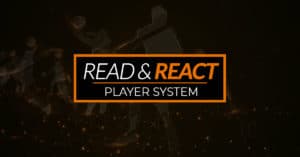One of the toughest things to teach young players is effectively trapping the basketball without committing a foul. Trapping not only takes athleticism and skill, but it also requires a tremendous amount of self-discipline.
While there are several reasons why you may decide to trap, I think we can all agree the main purpose is to force turnovers. (Through deflections, errant passes, and 5 / 10 second counts)
Before I go into the technique of trapping the basketball, lets discuss the places on the court where traps are most effective. This is simple to teach, it is anywhere on the court where you can use two end/sidelines as defenders.
- Both corners in the Back Court (aka “Coffin Corner”)
- Half-Court Corners in Front Court
- Baseline Corners in Front Court (I highlighted these in green as these are not always a must trap, all dependent on position/balance of floor.
Now lets go through the technique/teaching points of trapping.
- Create a Wall: One of the most important factors in trapping is preventing a split by a step/dribble through. This is not done with arms/hands, it is done by having the trappers slightly overlap their feet and almost interlock their legs like a wall. This also forces the trappers hips in tighter and closes that gap.
- Arms Up / Hands Up: When you are first teaching young players how to properly trap, I think the most important piece to teach them is how NOT to foul. Too often players start pushing and slapping with their hands, resulting in a foul and making the trap ineffective. One way to remedy this issue is to teach never to break your arms; meaning do not break (bend) your elbows and do not break your plane (reach over the offensive player). This will create a higher wall in which the offense player must try to pass over or around. I am sure many you of teach to trace the ball, but once the offensive player brings the ball down, the trappers bring their hands down and young players are not self-disciplined enough to not try to reach or grab at the ball. If you create a strong wall up-front, the only direction they should be able to pass the ball is behind them or overtop. If you do a great job hands high, the pass overtop should be a rainbow pass which could result in a steal, but will also give your defensive players more time to recover back to the ball.
- Close the Wall:Adding to point #2, if the offensive player ever takes the ball over their head, your trappers should walk up under the offensive player.What do I mean by walking up? Have your trappers move closer to the offense player with their body(s) keeping their arms/hands up. This will make the offensive player feel extremely uncomfortably and off-balance and make it make hard to make a strong pass out. However, it is important that once you meet the offensive players body you stop walking so the official cannot call a foul.It is important that throughout the entire trap, your trappers keep their knees slightly bent in an athletic position. Standing straight up will inevitably result in either a foul or a split every single time.
I am not going to go into too much detail on when/who to trap and the rotations as that is all dependent on the location of the ball, who has the ball, and location of the other players.
In the case below, X4 ran and jumped the ball and trapped with X1. My philosophy on this is if you have a quick enough X4, they need to have the freedom to decide when they think is the best time to trap and not to trap. Some coaches may prefer to jump with X3 and attempt to steal the pass back to 4, but I prefer to have X3 stay on 3. Most Bigs are not the best handlers, so why force the ball out of their hands? In this case, X4 will sprint back and try to turn 4 at least twice before half-court while X1 and X3 deny their man.
Drilling
While there are numerous drills to practice trapping, this 3-on-3 drill is the best I have seen. (If you have some great drills please feel free to share with).
Place three offensive players around the circle to form a triangle (They are not allowed to move or dribble), place three defensive players inside of that circle; coach has the ball. Once the ball is passed the two closest defenders trap the ball. The third defensive player must play safety and stunt and try to read the passer and steal the pass. The offensive player with the ball can pass to either of the other two offensive players; this also encourages fake a pass / make a pass. The two trappers are trying to deflect any passes out.

- You can put time on the clock and see which team can get the most deflections/force turnovers (switching offense to defense half-way through)
- The player that gets a pass deflected/turnover goes to defense, the player that deflects/steals goes to offense
Throw this into your pre-season work, I guarantee it will increase your defensive efficiency.









